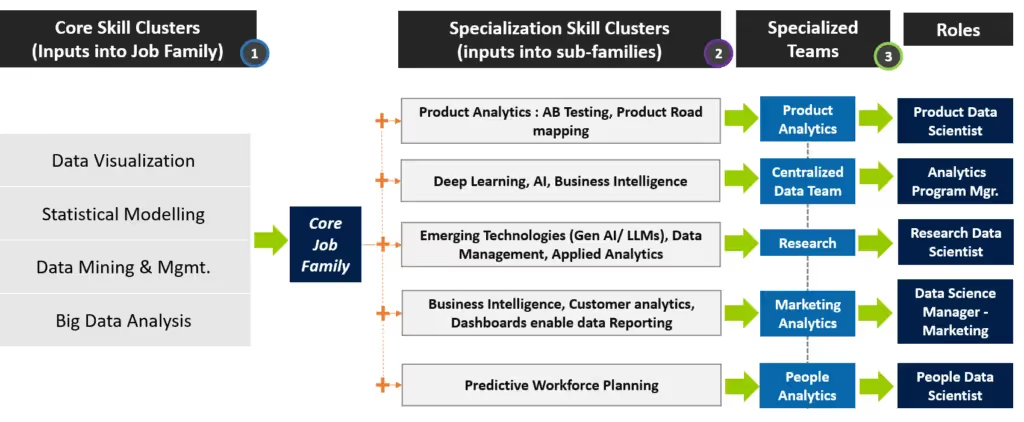Leveraging Existing Job Roles to Transition to a Skills-Based Role Architecture
As you all know, migrating to a full skills-based architecture has caused some organizational delays because businesses continue to focus heavily on traditional job roles. This challenge was discussed extensively in several Strategic Workforce Planning (SWP) conferences we attended this year. Despite these challenges, we have just completed an intriguing project where we developed a comprehensive model that leverages existing job roles to transition towards a skills-based architecture. (not a full-blown skills-based architecture but an intermediate point with reasonable utility value for enterprises).
Our approach is designed to be straightforward and aims to create more specialized roles within the existing critical job families. By focusing on the specific skills and competencies required for each role, we can better align our workforce with the strategic needs of the business. This model maintains the current job structure and enhances it by integrating skills-based principles, making our organization more agile and responsive to future demands.
Through this transition, we aim to foster a more dynamic and flexible workforce, enabling employees to develop their skills continuously and take on roles that match their evolving capabilities. This shift will help us to address skill gaps more effectively, improve talent utilization, and support career growth for our employees. Ultimately, this skills-based architecture will drive organizational success and ensure we remain competitive in an ever-changing business landscape.
Take, for example, the Data Science job family. Certain core skills are essential for all data scientists, but specialized skills are also required for specific roles within this field. These specializations can vary widely depending on whether an individual aims to become an AI researcher, a centralized data team analytics manager, a product-specific data scientist, etc. By identifying these specialized skills, we can create more targeted opportunities for employees, allowing them to focus on areas where they can excel and contribute the most value to the organization. This approach enhances individual career development and ensures that we have the right expertise in critical areas to drive innovation and success.

Summary: A quasi-skills architecture model can provide significant benefits on your journey toward a fully skills-based architecture










.svg)




















.svg)





.svg)
